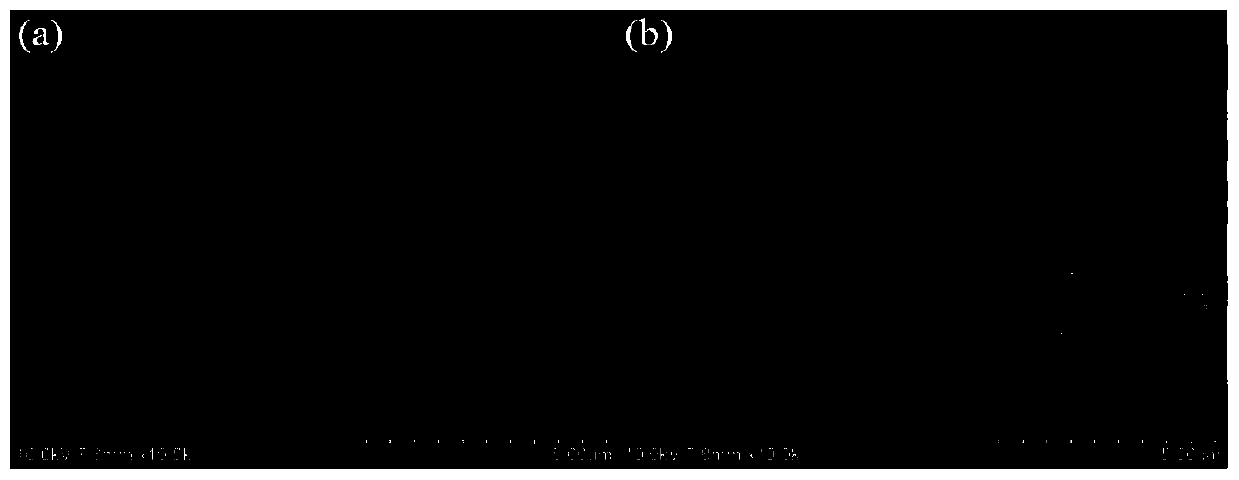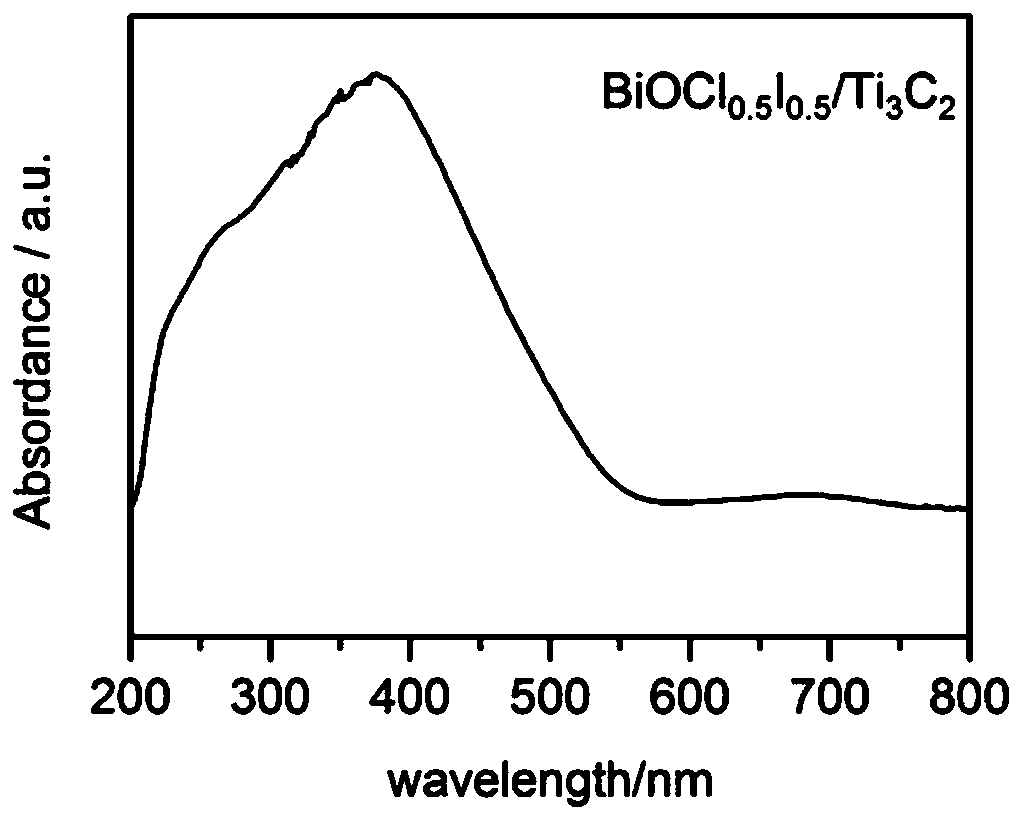Halogen bismuth oxide/titanium carbide photocatalysis composite material and preparing method thereof
A composite material, bismuth oxyhalide technology, applied in the field of photocatalytic materials, to achieve excellent photocatalytic activity, convenient operation and low cost
- Summary
- Abstract
- Description
- Claims
- Application Information
AI Technical Summary
Problems solved by technology
Method used
Image
Examples
Embodiment 1
[0024] 1) Preparation of photocatalyst
[0025] 1g Ti 3 AlC 2 Slowly added to 20mL of 40% HF solution, stirred at a constant temperature of 60°C for 48 hours, washed and dried to obtain Ti 3 C 2 Material. Subsequently, 1 g of the acid-etched Ti 3 C 2 material, slowly added to 5ml dimethyl sulfoxide solution, ultrasonically dispersed for 24 hours, left to stand, washed, centrifuged, and dried to obtain ultra-thin two-dimensional Ti 3 C 2 Material.
[0026] 4mmol Bi(NO 3 )·5H 2 O with 6.12 mg Ti 3 C 2 Add it into 40mL of ethylene glycol, and ultrasonically disperse for 15 minutes to obtain A solution. Add 2mmol KI and 2mmol KCl into 40mL ethylene glycol, and ultrasonically disperse for 15 minutes to obtain B solution. Subsequently, solution B was added dropwise to solution A, stirred for 60 minutes to form a uniformly dispersed mixed solution, transferred to an autoclave, and reacted at a constant temperature of 160°C for 24 hours, washed and dried to obtain BiOCl ...
Embodiment 2
[0034] 1) Preparation of photocatalyst
[0035] 2mmol Bi(NO 3 )·5H 2 O with 3.06 mg Ti 3 C 2 Add it into 40mL of ethylene glycol, and ultrasonically disperse for 15 minutes to obtain A solution. 0.5mmol KI and 0.5mmol KCl were added in 40mL ethylene glycol, and ultrasonically dispersed for 15 minutes to obtain B solution. Subsequently, solution B was added dropwise to solution A, stirred for 60 minutes to form a uniformly dispersed mixed solution, transferred to an autoclave, and reacted at a constant temperature of 180°C for 24 hours, washed and dried to obtain BiOCl 0.5 I 0.5 / Ti 3 C 2 composite material. In the absence of Ti 3 C 2 Under the condition of pure BiOCl 0.5 I 0.5 was synthesized in the same way.
[0036] 2) Photocatalysis experiment
[0037] The prepared above-mentioned photocatalyst (1g / L) is put into the Cr(VI) solution (50ml) that concentration is 60ppm, under magnetic stirring condition, after dark reaction 30 minutes, turn on xenon lamp light s...
Embodiment 3
[0040] 4mmol Bi(NO 3 )·5H 2 O with 6.12 mg Ti 3 C 2 Add it into 40mL of ethylene glycol, and ultrasonically disperse for 15 minutes to obtain A solution. 0.8mmol KI and 0.2mmol KCl were added in 40mL ethylene glycol, and ultrasonically dispersed for 15 minutes to obtain B solution. Subsequently, solution B was added dropwise to solution A, stirred for 60 minutes to form a uniformly dispersed mixed solution, transferred to an autoclave, and reacted at a constant temperature of 150°C for 24 hours, washed and dried to obtain BiOCl 0.2 I 0.8 / Ti 3 C 2 composite material.
[0041] Adopt the test method described in embodiment 2 to test the photocatalyst that this example makes under visible light irradiation to the degradative activity of antibiotic, reach 86% to the degradation rate of antibiotic.
PUM
 Login to View More
Login to View More Abstract
Description
Claims
Application Information
 Login to View More
Login to View More - R&D
- Intellectual Property
- Life Sciences
- Materials
- Tech Scout
- Unparalleled Data Quality
- Higher Quality Content
- 60% Fewer Hallucinations
Browse by: Latest US Patents, China's latest patents, Technical Efficacy Thesaurus, Application Domain, Technology Topic, Popular Technical Reports.
© 2025 PatSnap. All rights reserved.Legal|Privacy policy|Modern Slavery Act Transparency Statement|Sitemap|About US| Contact US: help@patsnap.com



